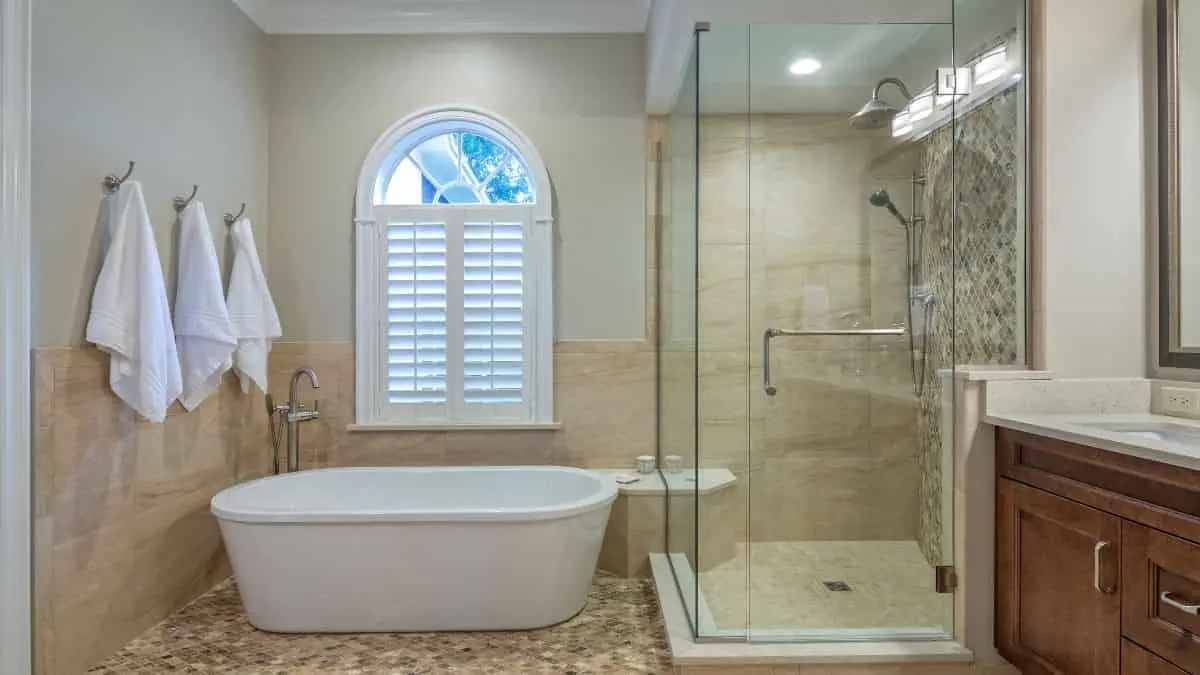When it comes to home renovations, the bathroom is one of the most important spaces to consider. Not only does a well-planned bathroom remodel enhance your daily routine, but it also significantly boosts your home’s value. In fact, did you know that a mid-range bathroom remodel can recoup up to 60% of its cost in added home value? Whether you’re dreaming of a luxurious spa-like retreat or simply want to modernize a dated space, diving into a remodel without a plan can be overwhelming.
That’s where a bathroom remodel checklist comes in handy. Think of it as your roadmap, guiding you through each step, from setting a budget to picking out the perfect tile. With so many decisions to make and details to consider, having a checklist ensures nothing is overlooked, saving you time, money, and stress.
In this post, we’ll walk you through the top 10 must-do steps for a successful bathroom remodel. Whether you’re a seasoned DIYer or hiring a pro, following this checklist will help you create the bathroom of your dreams—without the headaches. Let’s get started!
Step 1: Set a Realistic Budget
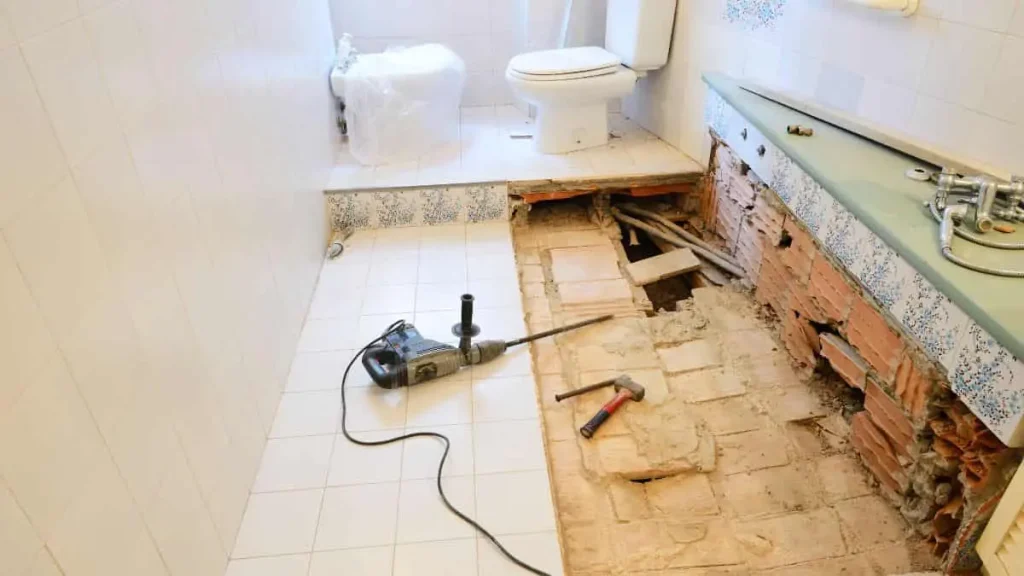
Before you start picking out tiles and fixtures, it’s crucial to establish a clear and realistic budget for your bathroom remodel. Budgeting might not be the most exciting part of the process, but it’s the foundation that ensures your project stays on track and doesn’t end up costing you more than you bargained for.
Why Budgeting is Key
A well-thought-out budget not only helps you avoid financial stress but also guides all your decisions throughout the remodel. It allows you to prioritize the features that matter most to you while ensuring you don’t overspend on less important elements. Plus, having a solid budget helps you communicate more effectively with contractors, preventing surprises down the line.
Breaking Down the Costs
When setting your budget, it’s essential to understand where the money will go. Here’s a rough breakdown of the main expenses:
Labor: This can account for up to 40-60% of your total budget, depending on the complexity of the work and your location.
Materials: This includes everything from tiles and fixtures to paint and lighting, usually taking up 20-30% of the budget.
Permits and Fees: Depending on your project, you may need permits, which can add to your costs.
Unexpected Expenses: It’s wise to set aside an extra 10-15% of your budget for unforeseen issues like plumbing problems or structural repairs.
Tips for Budgeting Smartly
- Prioritize Your Needs: Decide what’s non-negotiable and what can be scaled back. For example, if a high-end shower system is a must-have, you might choose more budget-friendly flooring options.
- Get Multiple Quotes: If you’re hiring professionals, don’t settle for the first quote. Compare prices and services to get the best value for your money.
- Include a Contingency Fund: Remodeling projects often come with surprises. By setting aside a contingency fund, you’ll be prepared for any unexpected costs without derailing your project.
Pro Tip: Be Flexible
While sticking to your budget is important, being flexible with certain elements can make a big difference. For instance, if you find a stunning tile that’s slightly over budget but will make your bathroom truly stand out, it might be worth adjusting your budget elsewhere.
Setting a realistic budget might seem like a lot of work, but it’s the first and most critical step in your bathroom remodel checklist. With a clear budget in place, you’ll be ready to move forward confidently, knowing exactly what you can afford and where your money is going.
Step 2: Plan the Layout

Once you’ve nailed down your budget, it’s time to turn your attention to the layout of your bathroom. Whether you’re working with a small space or have plenty of room to play with, a well-thought-out layout is key to creating a functional and aesthetically pleasing bathroom. Think of the layout as the backbone of your remodel—get it right, and everything else will fall into place.
Evaluate Your Current Layout
Start by assessing what’s working in your current bathroom and what’s not. Are there areas that feel cramped or awkward? Is there enough storage? Are the fixtures positioned in a way that makes sense for your daily routine? Taking the time to evaluate these aspects will help you determine what changes need to be made.
- What’s Working: Maybe your vanity is perfectly placed, offering plenty of counter space. Or perhaps the shower is just the right size.
- What Needs Improvement: On the other hand, perhaps the toilet feels squeezed into a corner, or the shower door interferes with opening cabinets. Identifying these pain points is the first step toward a more functional layout.
Consider Functionality
When planning your layout, functionality should be your top priority. The best-looking bathroom won’t do you much good if it’s not practical for everyday use. Here are some key considerations:
- Flow and Accessibility: Ensure there’s a natural flow between the main areas—sink, toilet, and shower or bath. You don’t want to be navigating obstacles just to brush your teeth!
- Space Optimization: Think about how to make the most of your space, especially in smaller bathrooms. For example, consider a corner sink to free up floor space or a wall-mounted toilet to create a more open feel.
- Privacy: If your bathroom is shared, consider how to create zones for privacy, such as separating the toilet from the rest of the bathroom with a partial wall.
Popular Layout Options
If you’re not sure where to start, consider some common bathroom layouts:
- Single-Wall Layout: Everything is placed along one wall, which is a great option for smaller spaces.
- Galley Layout: Fixtures are placed on opposite walls, maximizing the use of narrow spaces.
- L-Shaped Layout: A good choice for larger bathrooms, allowing you to create separate zones for different functions.
Each layout has its pros and cons, so think about which one best suits your space and needs.
Pro Tip: Use Online Tools or Consult with a Designer
If you’re struggling to visualize your new layout, there are plenty of online tools that can help. These tools allow you to experiment with different layouts and see how everything fits together. Alternatively, consulting with a professional designer can provide valuable insights and ensure your layout is both functional and beautiful.
Planning your layout is a crucial step in your bathroom remodel checklist. By focusing on functionality and making the most of your space, you’ll create a bathroom that not only looks great but also works seamlessly for your daily routine.
Step 3: Choose Your Style and Design
With your budget set and layout planned, it’s time to dive into the fun part—choosing the style and design of your bathroom! This is where you get to express your personality and create a space that feels uniquely yours. Whether you’re drawn to sleek modern lines, cozy farmhouse charm, or timeless classic elegance, defining your style will guide all your design choices, from fixtures to finishes.
Define Your Style
Before you start picking out tiles and faucets, take some time to define the overall style you want for your bathroom. Here are a few popular bathroom styles to consider:
- Modern: Clean lines, minimalistic design, and a focus on functionality. Think floating vanities, frameless glass showers, and neutral color palettes.
- Traditional: Classic elegance with ornate details. This style often features detailed cabinetry, clawfoot tubs, and warm, rich colors.
- Farmhouse: Cozy and rustic, with a focus on natural materials. Picture shiplap walls, wooden vanities, and vintage-inspired fixtures.
- Industrial: Raw and edgy, this style incorporates materials like exposed brick, concrete, and metal finishes for a bold look.
- Transitional: A blend of traditional and modern elements, offering the best of both worlds. This style is versatile and timeless, making it a popular choice.
Create a Mood Board
Once you’ve identified your preferred style, creating a mood board can help bring your vision to life. Gather inspiration from magazines, Pinterest, or design websites and compile images that capture the look and feel you want. Include everything from color schemes and tile patterns to lighting fixtures and hardware. This visual tool will serve as a reference point as you make design decisions, ensuring everything stays cohesive.
Choose Your Color Palette
Your color palette plays a significant role in setting the tone for your bathroom. Whether you want a serene spa-like retreat or a bold, vibrant space, your color choices will help achieve that atmosphere. Here are some tips for selecting the right palette:
- Neutral Tones: Whites, grays, and beiges create a clean, timeless look and make small bathrooms feel larger.
- Bold Colors: If you want to make a statement, consider deep blues, rich greens, or even black for a dramatic effect.
- Accent Colors: Use accent colors sparingly in elements like towels, rugs, or decorative items to add personality without overwhelming the space.
Select Your Fixtures and Finishes
With your style and color palette in mind, it’s time to choose the fixtures and finishes that will bring your design to life. Consider the following elements:
- Vanity and Countertops: The vanity is often the centerpiece of the bathroom, so choose one that complements your style. Pair it with countertops that are durable and match your design aesthetic.
- Tiles: From subway tiles to intricate mosaics, the options are endless. Think about how the tile will flow with the rest of your bathroom and how it will contribute to the overall design.
- Lighting: Lighting is both functional and decorative. Consider a mix of overhead lights, task lighting (like vanity lights), and accent lighting to create the perfect ambiance.
- Hardware and Fixtures: Don’t overlook the small details like faucets, drawer pulls, and towel bars. These finishing touches can make a big difference in the overall look.
Pro Tip: Mix and Match with Confidence
Don’t be afraid to mix different materials and finishes to create a layered, custom look. For instance, pairing a sleek marble countertop with rustic wooden cabinets can add depth and interest to your design. Just make sure the elements you choose complement each other and fit within your overall style.
Choosing your style and design is one of the most enjoyable steps in your bathroom remodel checklist. By clearly defining your style, creating a cohesive design, and selecting the right fixtures and finishes, you’ll be well on your way to creating a bathroom that’s not only functional but also a true reflection of your personal taste.
Step 4: Consider Plumbing and Electrical Upgrades

While choosing your style and design is certainly exciting, don’t overlook the less glamorous—but equally important—aspects of your bathroom remodel: plumbing and electrical upgrades. Ensuring that your bathroom’s infrastructure is up to date and in good working order is essential for both functionality and safety. Plus, addressing these systems during a remodel can save you from costly repairs down the road.
Assess Your Current Plumbing
Before diving into any upgrades, take a close look at your existing plumbing. Are there frequent clogs, leaks, or slow drains? These could be signs of outdated or deteriorating pipes that need to be replaced. Here are some key areas to focus on:
Pipes: Older homes may have galvanized pipes, which are prone to corrosion and reduced water flow. Consider replacing them with modern materials like PEX or copper for improved durability and performance.
Water Pressure: If your water pressure is consistently low, it could indicate an issue with your plumbing. A plumber can assess whether the problem is with your pipes or the municipal supply.
Drainage: Ensure that your drainage system is functioning properly, especially if you’re adding new fixtures like a double vanity or a larger shower. You may need to upgrade your pipes to handle the increased water flow.
Upgrade Plumbing Fixtures
If you’re already working on your bathroom, it’s the perfect time to upgrade your plumbing fixtures. New fixtures can enhance both the look and functionality of your bathroom. Consider the following:
- Toilets: Modern toilets use less water while providing powerful flushing performance. You might also consider a comfort-height toilet for added accessibility.
- Showers and Tubs: If you’re installing a new shower or tub, make sure your plumbing can accommodate it. For instance, a rainfall showerhead may require a different water pressure than a standard one.
- Faucets: Leaky or outdated faucets can be replaced with water-efficient models that also add style to your sink or tub.
Evaluate Electrical Needs
Next, consider the electrical aspects of your remodel. Bathrooms require special attention to ensure that all electrical components meet current safety standards. Here’s what to keep in mind:
- Lighting: Upgrading your lighting is one of the easiest ways to improve your bathroom’s ambiance and functionality. Consider adding task lighting around the vanity, ambient lighting for the overall space, and accent lighting for added style. Make sure all lighting fixtures are rated for use in damp environments.
- GFCI Outlets: Ground Fault Circuit Interrupter (GFCI) outlets are a must in bathrooms to protect against electrical shocks. If your outlets are outdated, upgrading to GFCI outlets is a crucial safety measure.
- Heated Floors: If you live in a colder climate or simply want a touch of luxury, consider installing radiant floor heating. This upgrade can be especially appealing if you’re replacing your flooring anyway.
Work with Professionals
Plumbing and electrical work are not areas where you want to cut corners. Poorly installed systems can lead to leaks, water damage, electrical fires, and other hazards. Unless you’re an experienced DIYer, it’s best to hire licensed professionals for these upgrades. They can ensure everything is up to code and properly installed.
Pro Tip: Plan for the Future
If you’re considering future upgrades, such as adding a second bathroom or installing a high-tech shower system, it’s wise to prepare your plumbing and electrical systems now. This might mean upgrading your water heater, increasing water pressure, or adding extra circuits to your electrical panel.
Considering plumbing and electrical upgrades might not be the most glamorous part of your bathroom remodel checklist, but it’s one of the most important. By ensuring that these systems are up to date and capable of handling your new design, you’ll create a bathroom that’s not only beautiful but also safe, functional, and ready to meet your needs for years to come.
Step 5: Select the Right Fixtures and Fittings
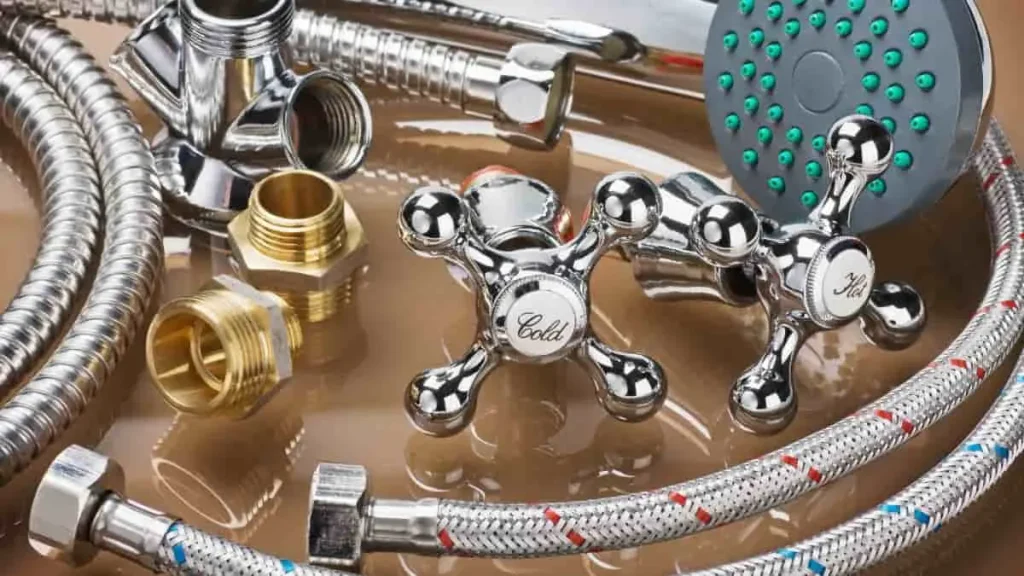
With your plumbing and electrical systems upgraded, it’s time to focus on the fixtures and fittings that will bring your bathroom design to life. These are the elements you’ll interact with daily, so choosing the right ones is crucial not only for aesthetic appeal but also for functionality and comfort. From the perfect sink to the ideal showerhead, selecting the right fixtures and fittings can make or break your bathroom remodel.
Understand the Role of Fixtures and Fittings
Fixtures and fittings are the workhorses of your bathroom, playing a vital role in both the look and usability of the space. Here’s a breakdown of what they include:
- Fixtures: These are permanent elements like sinks, bathtubs, toilets, and showers. They’re typically installed into the plumbing system.
- Fittings: These are the smaller, often movable, parts such as faucets, showerheads, towel bars, and toilet paper holders.
Choosing fixtures and fittings that match your style while offering durability and ease of use is key to creating a bathroom that you’ll love for years to come.
Selecting the Perfect Sink
The sink is often a focal point in the bathroom, so it’s important to choose one that complements your overall design while meeting your practical needs. Here are some popular options:
- Pedestal Sink: Ideal for small bathrooms, a pedestal sink offers a classic look with a small footprint, though it lacks storage.
- Vessel Sink: Sitting on top of the vanity, a vessel sink makes a bold design statement and allows for more counter space.
- Undermount Sink: Installed below the countertop, this option offers a seamless look and makes cleaning easier.
- Integrated Sink: Often found in modern designs, the sink and countertop are made from a single material, creating a sleek and minimalist appearance.
Consider the size of your bathroom, your storage needs, and your design preferences when choosing the right sink.
Choosing the Best Bathtub or Shower
Your choice of bathtub or shower can significantly impact both the style and functionality of your bathroom. Here are some things to consider:
- Bathtubs: If you love soaking, a freestanding tub can be a stunning centerpiece, especially in larger bathrooms. For smaller spaces, a built-in tub with shower combo might be more practical.
- Showers: If you prefer showers, consider upgrading to a walk-in shower with a frameless glass door for a modern look. Think about whether you want a standard showerhead, a rainfall shower, or a multi-function shower system with adjustable settings.
- Bathtub-Shower Combo: This versatile option is ideal for those who want the best of both worlds, offering the convenience of a quick shower and the luxury of a relaxing bath.
When selecting a tub or shower, think about who will be using it and how often, as well as the overall design aesthetic of your bathroom.
Recommended Post: How to Remodel a Shower Stall With Tile
Picking the Right Toilet
While it may not be the most glamorous part of your bathroom remodel, choosing the right toilet is important for comfort and functionality. Consider the following options:
- Two-Piece Toilet: The most common type, with a separate tank and bowl, typically more affordable and easier to repair.
- One-Piece Toilet: A sleek, seamless design that’s easier to clean but may come at a higher price point.
- Wall-Mounted Toilet: Perfect for a modern, space-saving design, though installation can be more complex.
- Smart Toilet: High-tech options with features like heated seats, bidets, and automatic flushing are becoming increasingly popular.
Consider the height, flushing mechanism, and water efficiency when selecting a toilet that fits your needs and preferences.
Faucets and Showerheads: The Finishing Touches
The right faucets and showerheads can add style and enhance the functionality of your bathroom. Here’s what to keep in mind:
- Faucets: Choose a faucet that matches your sink type. For example, a widespread faucet is ideal for a larger vanity, while a single-hole faucet works well with a smaller or vessel sink. Pay attention to the finish—chrome, brushed nickel, and matte black are popular options that can complement your overall design.
- Showerheads: Your showerhead choice can elevate your daily routine. A rainfall showerhead offers a luxurious, spa-like experience, while a handheld showerhead provides flexibility and ease of use. Consider multi-function showerheads that allow you to switch between different spray patterns for a customized shower experience.
Pro Tip: Consider Water Efficiency
When selecting fixtures and fittings, look for options that are water-efficient. Many modern fixtures are designed to reduce water usage without sacrificing performance. Look for WaterSense-labeled products, which meet EPA standards for efficiency and can help you save on your water bill.
Choosing the right fixtures and fittings is a crucial step in your bathroom remodel checklist. By focusing on quality, style, and functionality, you’ll create a bathroom that’s not only beautiful but also tailored to your daily needs. Whether it’s the perfect sink, a luxurious showerhead, or the ideal toilet, these choices will significantly impact your satisfaction with the finished space.
Step 6: Focus on Flooring
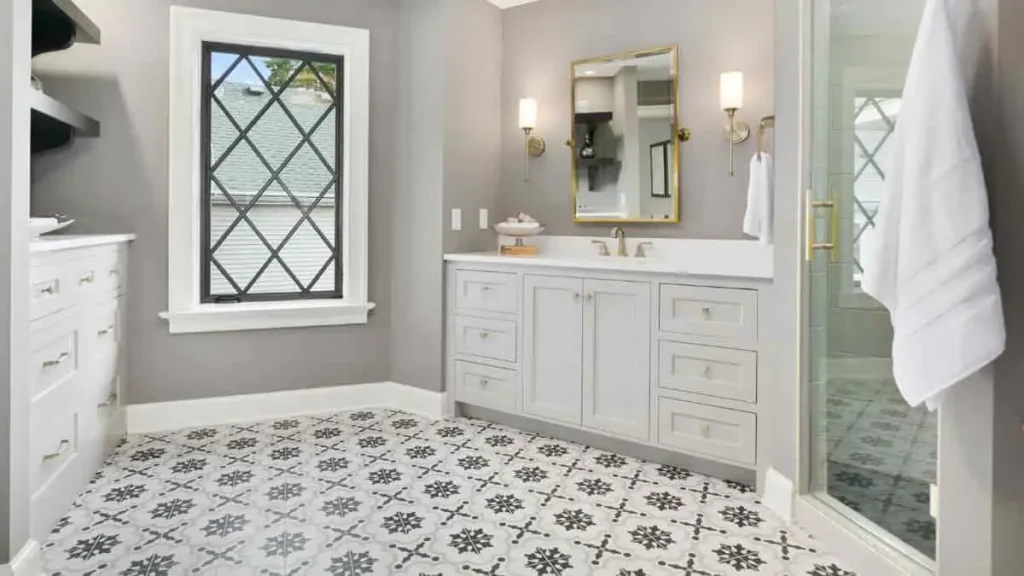
Flooring is a fundamental part of any bathroom remodel. It’s not just about aesthetics—your bathroom floor needs to withstand moisture, offer durability, and provide safety. Choosing the right flooring can set the tone for the entire space while ensuring that it remains functional and easy to maintain.
Consider Durability and Water Resistance
Bathrooms are high-traffic areas that experience frequent exposure to water, so the flooring material you choose needs to be durable and water-resistant. Here are some of the best options:
- Ceramic or Porcelain Tile: A classic choice for bathrooms, ceramic and porcelain tiles are incredibly durable, water-resistant, and available in a wide variety of styles and colors. They can mimic the look of wood, stone, or even concrete, offering great versatility in design. Plus, they’re easy to clean and maintain.
- Vinyl Flooring: Vinyl has come a long way in recent years and is now available in luxury options that closely resemble natural materials like wood or stone. It’s a budget-friendly, water-resistant, and comfortable choice, making it a popular option for bathroom floors.
- Natural Stone: If you’re looking for something truly luxurious, natural stone like marble, granite, or travertine can make a stunning statement. While more expensive and requiring a bit more maintenance, stone offers a unique, high-end look. Keep in mind that natural stone needs to be sealed properly to prevent water damage.
- Engineered Wood: While not as water-resistant as tile or vinyl, engineered wood is a good option if you prefer the warmth and texture of wood flooring. It’s made with a plywood base that’s more stable and less prone to warping than solid wood, making it somewhat more suitable for bathrooms. However, it still requires careful installation and regular maintenance to protect it from moisture.
Evaluate Slip Resistance
Safety is a top priority in a bathroom, and your flooring choice plays a significant role in preventing slips and falls, especially when the floor is wet. Here’s what to consider:
- Textured Tiles: Opt for tiles with a textured surface to provide better traction. Many bathroom-specific tiles are designed with a slight texture or matte finish to reduce the risk of slipping.
- Smaller Tiles: Using smaller tiles with more grout lines can also increase slip resistance. The extra grout creates more friction underfoot, making it less likely that you’ll slip, even when the floor is wet.
- Non-Slip Coatings: If you’re in love with a particular tile but concerned about slip resistance, consider applying a non-slip coating. This can enhance the safety of your flooring without altering its appearance.
Think About Comfort and Warmth
Bathrooms can be cold, especially in the morning or during the winter months. Choosing a flooring material that adds warmth and comfort underfoot can make your bathroom more enjoyable to use. Here are some options:
- Radiant Floor Heating: Installing radiant floor heating beneath your bathroom floor is a fantastic way to add warmth. It’s compatible with many types of flooring, including tile and stone, and provides a luxurious, evenly heated surface that’s perfect for cold mornings.
- Cork Flooring: While less common in bathrooms, cork is a warm, soft material that provides a comfortable surface to stand on. It’s naturally resistant to mold and mildew, but it does require proper sealing to make it suitable for a bathroom environment.
Coordinate with Your Overall Design
Your flooring should complement the overall style and color scheme of your bathroom. Here’s how to ensure your floor ties the room together:
- Color Palette: Choose a flooring color that either contrasts with or complements your walls, vanity, and fixtures. For a cohesive look, consider matching the undertones of your flooring with other elements in the room.
- Pattern and Layout: The pattern and layout of your flooring can also enhance your bathroom’s design. For example, a herringbone or diagonal tile pattern can add visual interest, while a straight grid layout offers a more traditional look. Large-format tiles can make a small bathroom feel bigger, while smaller tiles can create a cozy, intricate design.
Pro Tip: Plan for Maintenance
Consider the maintenance requirements of your chosen flooring material. While all bathroom floors require regular cleaning, some materials, like natural stone or certain types of wood, need extra care to keep them looking their best. Make sure you’re prepared for the upkeep that comes with your flooring choice.
Focusing on flooring is a critical step in your bathroom remodel checklist. The right flooring choice not only enhances the beauty of your bathroom but also ensures it’s safe, durable, and comfortable. Whether you opt for classic tile, luxurious stone, or budget-friendly vinyl, your bathroom floor will play a key role in the overall success of your remodel.
Step 7: Optimize Storage Solutions
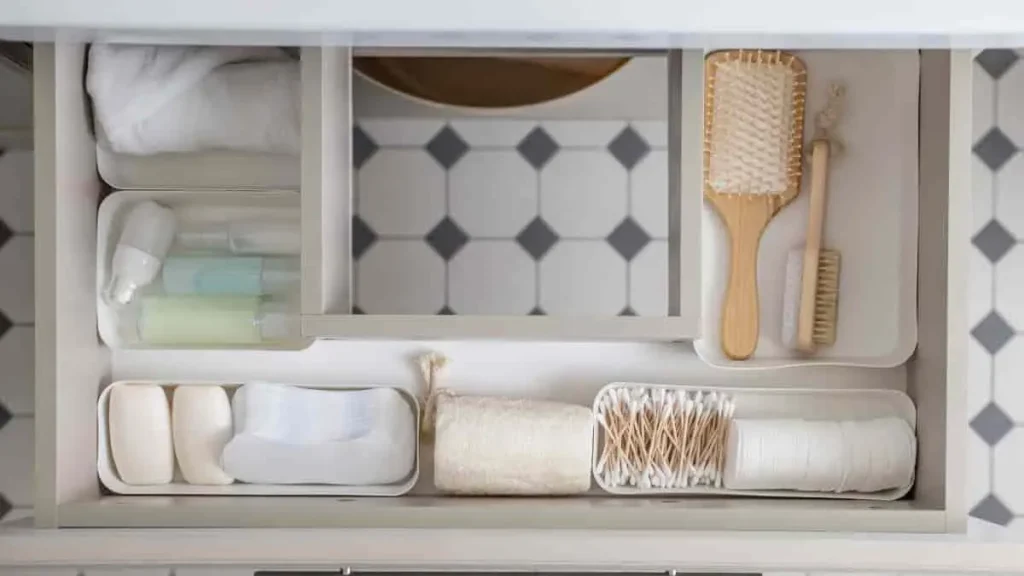
A well-designed bathroom should be both stylish and functional, and optimizing storage is key to achieving that balance. Effective storage solutions help keep your bathroom clutter-free, making it easier to maintain and more enjoyable to use. Whether you’re dealing with a small powder room or a spacious master bath, there are plenty of ways to maximize storage without sacrificing style.
Assess Your Storage Needs
Before diving into specific storage solutions, take a moment to assess what you need to store in your bathroom. Consider the following:
- Daily Essentials: What items do you use every day? This might include toiletries, skincare products, and towels. These should be easily accessible.
- Occasional Items: Think about items you use less frequently, such as spare toiletries, cleaning supplies, or first-aid kits. These can be stored in less accessible areas.
- Decorative Items: If you plan to display decorative items like candles, plants, or artwork, factor this into your storage planning to ensure there’s enough space without cluttering the room.
Incorporate Built-In Storage
Built-in storage solutions can be a game-changer in bathroom design, providing ample space without taking up extra room. Here are some ideas:
- Vanity with Drawers and Cabinets: A well-designed vanity offers a blend of drawers and cabinets to store everything from toiletries to cleaning supplies. Opt for a vanity with deep drawers that can accommodate larger items like hairdryers and bulkier products.
- Recessed Medicine Cabinet: A recessed medicine cabinet is an excellent way to add storage without sacrificing counter space. It provides a place to store smaller items like medications, toothbrushes, and other daily essentials while keeping them out of sight.
- Shower Niches: Installing a shower niche (or multiple niches) is a sleek way to keep your shower organized. Niches provide a built-in space for shampoo, conditioner, and soap, eliminating the need for bulky caddies or shelves.
Make Use of Vertical Space
When floor space is limited, vertical storage solutions can help you make the most of your bathroom. Consider these options:
- Wall-Mounted Shelves: Installing shelves above the toilet, next to the vanity, or even in the shower can provide additional storage space for towels, toiletries, and decorative items. Choose shelves that match your bathroom’s style, whether that’s rustic wood or sleek glass.
- Tall Cabinets: A tall, narrow cabinet can fit into tight spaces while offering significant storage. Use it to store towels, linens, and other bulky items that need to be kept out of sight.
- Over-the-Door Storage: Don’t forget the back of your bathroom door! Over-the-door racks or hooks can hold towels, robes, or even small baskets for toiletries, making it a smart storage spot in smaller bathrooms.
Choose Multifunctional Furniture
In smaller bathrooms, multifunctional furniture can help you maximize storage without overcrowding the space. Here are a few ideas:
- Storage Benches: A storage bench not only provides a place to sit but also offers hidden storage for items like towels or extra toilet paper. Place it near the shower or bathtub for easy access.
- Mirrored Cabinets: Mirrored cabinets serve double duty by providing a mirror and storage in one. They’re perfect for keeping daily essentials close at hand without cluttering the countertop.
- Ladder Shelves: A ladder shelf leans against the wall and offers multiple levels of storage without taking up much floor space. Use it to store towels, display decorative items, or even hold baskets for smaller toiletries.
Declutter with Smart Organization
Even the best storage solutions won’t be effective if they’re cluttered and disorganized. Implement these organizational tips to keep your bathroom tidy:
- Drawer Dividers: Use dividers in your vanity drawers to keep items like makeup, hair accessories, and toiletries organized. This prevents smaller items from getting lost and makes it easier to find what you need quickly.
- Clear Containers: Store cotton balls, Q-tips, and other small items in clear containers so you can easily see when you’re running low. Stackable containers are great for maximizing cabinet space.
- Baskets and Bins: Use baskets and bins to corral larger items like towels, cleaning supplies, or extra toilet paper. Choose baskets that match your bathroom’s decor for a cohesive look.
Pro Tip: Go for Open Shelving Wisely
While open shelving can be stylish, it requires careful consideration. Only store items you use frequently or decorative pieces you want to display. Open shelves can quickly become cluttered if not carefully managed, so be selective about what you place on them.
Optimizing storage solutions is a vital part of your bathroom remodel checklist. By incorporating smart, stylish storage options, you’ll create a bathroom that’s both functional and beautiful. Whether it’s through built-in cabinets, vertical storage, or multifunctional furniture, a well-organized bathroom will make your daily routine smoother and more enjoyable.
Step 8: Don’t Forget Ventilation
Good ventilation is often overlooked in bathroom remodels, but it’s a crucial component for maintaining a healthy, comfortable space. Proper ventilation helps control humidity levels, prevents mold growth, and improves air quality, ensuring your newly remodeled bathroom remains fresh and inviting. Here’s what you need to know about optimizing ventilation in your bathroom.
Understanding the Importance of Ventilation
Bathrooms are naturally humid environments, primarily due to showers, baths, and other water usage. Without adequate ventilation, this moisture can lead to:
- Mold and Mildew: These unwanted guests thrive in damp environments, posing health risks and damaging your walls, ceilings, and fixtures.
- Structural Damage: Excess moisture can weaken the integrity of your bathroom’s structure, leading to costly repairs over time.
- Unpleasant Odors: Poor ventilation can cause odors to linger, making your bathroom less pleasant to use.
Choosing the Right Ventilation System
There are several options for improving ventilation in your bathroom. Consider the following:
- Exhaust Fans: An exhaust fan is one of the most effective ways to remove excess moisture from your bathroom. When selecting a fan, consider the following:
- CFM Rating: Choose a fan with an appropriate CFM (cubic feet per minute) rating based on your bathroom size. As a general rule, aim for 1 CFM per square foot of space. For example, a 100-square-foot bathroom should have a fan rated for at least 100 CFM.
- Noise Level: Look for fans with a low sone rating (a measurement of noise). A quieter fan can help maintain a peaceful environment while still effectively removing moisture.
- Features: Consider models with built-in humidity sensors that automatically turn on and off based on moisture levels, as well as those with integrated lighting or heating options.
- Windows: If your bathroom has windows, opening them can provide natural ventilation. Consider installing operable windows that can be easily opened to allow fresh air to flow in. Additionally, frosted glass windows offer privacy while still letting in light.
- Natural Ventilation: In addition to windows, you can create cross-ventilation by installing vents in doors or walls that connect to other areas of the house. This allows air to flow freely, reducing humidity levels.
Installation Tips for Exhaust Fans
If you choose to install an exhaust fan, here are some key tips to ensure proper installation and effectiveness:
- Location Matters: Position the fan near the shower or bathtub to maximize its effectiveness in removing moisture. Ideally, it should be placed on the ceiling or high on the wall to capture rising humidity.
- Ducting: Ensure that the fan is vented outside the home rather than into an attic or crawl space. This prevents moisture buildup in those areas, which can lead to mold and other issues.
- Regular Maintenance: Keep your exhaust fan in top condition by cleaning it regularly and checking for any obstructions. Dust and debris can accumulate, reducing its efficiency.
Consider Additional Ventilation Solutions
In addition to exhaust fans and windows, you might want to explore other ventilation options:
- Dehumidifiers: If your bathroom is prone to high humidity levels, consider using a dehumidifier to help control moisture. Portable units can be moved as needed, while built-in options can be more convenient.
- Heated Towel Racks: These not only provide a cozy way to warm towels but can also help reduce humidity levels by promoting air circulation in the bathroom.
Pro Tip: Keep Doors Open
After showers, keep the bathroom door open to allow humidity to escape. This can help enhance air circulation, especially if your bathroom lacks windows or proper ventilation.
Ensuring proper ventilation is an essential step in your bathroom remodel checklist. By effectively managing humidity and improving air quality, you’ll create a healthier, more comfortable bathroom environment. Don’t underestimate the importance of ventilation; it’s the unsung hero that will keep your remodel looking and feeling fresh for years to come.
Step 9: Focus on Lighting
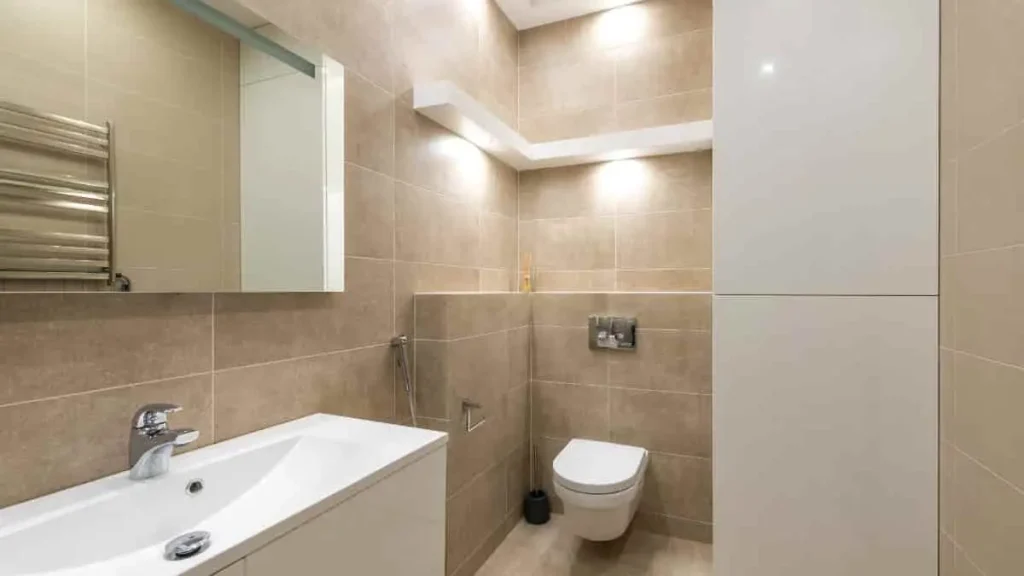
Lighting can transform the look and feel of your bathroom, making it a vital element in your remodel. Proper lighting enhances functionality, sets the mood, and highlights your design choices. Whether you’re getting ready for the day or enjoying a relaxing bath, the right lighting can make all the difference. Here’s how to effectively plan your bathroom lighting.
Understanding the Different Types of Lighting
When it comes to bathroom lighting, there are three main types to consider:
- Ambient Lighting: This is the general illumination that fills the entire space. It creates a warm and welcoming atmosphere, ensuring that you can move around safely. Ceiling-mounted fixtures or recessed lighting are great options for ambient lighting.
- Task Lighting: Task lighting focuses on specific areas where you need extra brightness for activities like shaving, applying makeup, or brushing your teeth. Sconces or LED strip lights placed around mirrors are excellent choices for task lighting.
- Accent Lighting: Accent lighting is used to highlight design features, such as artwork, architectural details, or decorative tiles. This type of lighting adds depth and interest to your bathroom, creating a more inviting space.
Choosing the Right Fixtures
Selecting the right fixtures is crucial for achieving a well-lit bathroom. Here are some tips:
- Layer Your Lighting: Combine ambient, task, and accent lighting to create a well-rounded lighting scheme. This approach allows for flexibility and ensures that you have adequate lighting for all activities.
- Consider Scale and Style: Choose fixtures that complement your bathroom’s design style. A modern bathroom may benefit from sleek, minimalistic fixtures, while a traditional space might call for more ornate options. Be mindful of the size of your fixtures; larger bathrooms can handle bigger statements, while smaller spaces may need more subtle choices.
- Use Dimmable Options: Installing dimmer switches allows you to adjust the brightness to suit your mood or the time of day. This is particularly useful for transitioning from bright task lighting during the morning routine to softer ambient lighting in the evening.
Lighting Placement Tips
Where you place your lighting can significantly impact functionality and aesthetics. Here are some placement tips:
- Mirror Lighting: To eliminate shadows on your face while grooming, place sconces or pendant lights on either side of the mirror at eye level. If this isn’t possible, overhead lighting directly above the mirror can also work, but make sure it’s bright enough to provide sufficient task lighting.
- Shower Lighting: If you’re adding lighting in the shower, ensure it’s rated for wet locations. Recessed lights or waterproof fixtures are great choices. Position them to avoid glare and shadows.
- Highlight Features: Use accent lighting to draw attention to features you want to showcase. For example, install LED strips along shelves or behind a floating vanity to create an illuminated effect that enhances your bathroom’s design.
Energy Efficiency Matters
As you plan your lighting, consider energy-efficient options. LED bulbs are a great choice because they consume less energy, have a longer lifespan, and come in a variety of color temperatures to suit your design. Look for fixtures that accommodate LED bulbs or are designed specifically for energy efficiency.
Pro Tip: Consider Natural Light
If your bathroom has windows, don’t forget to incorporate natural light into your lighting plan. Natural light can enhance your mood and make the space feel more open. Use window treatments that allow light to filter in while maintaining privacy, such as sheer curtains or frosted glass.
Focusing on lighting is an essential step in your bathroom remodel checklist. By thoughtfully selecting fixtures, layering your lighting, and considering both functionality and aesthetics, you can create a beautifully lit bathroom that meets all your needs. With the right lighting in place, your bathroom will not only look stunning but also feel like a relaxing retreat every time you step inside.
Step 10: Finishing Touches and Decor
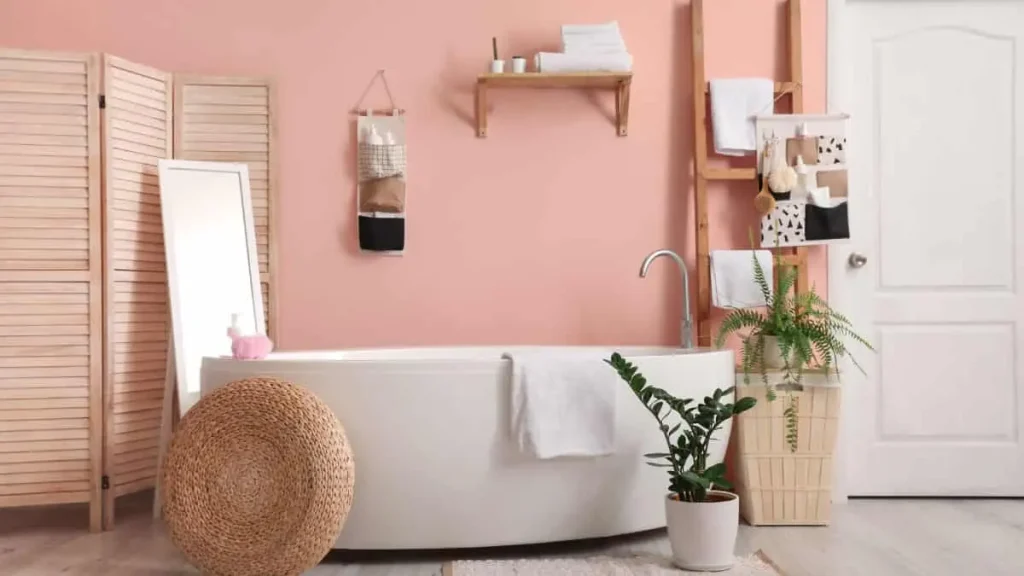
As you approach the final stages of your bathroom remodel, it’s time to focus on the finishing touches and decor that will bring your vision to life. These small yet impactful details can elevate the overall look of your space, making it feel personalized, welcoming, and complete. Here’s how to add those all-important finishing touches to your bathroom.
Selecting the Right Accessories
The right accessories can enhance the functionality and style of your bathroom. Here are some essential items to consider:
- Towels and Linens: Invest in high-quality, soft towels that complement your color scheme. Coordinate hand towels, bath towels, and bath mats to create a cohesive look. Consider incorporating textures, such as plush or patterned options, to add depth.
- Shower Curtains or Doors: Choose a shower curtain that fits your style and complements the overall design. If you prefer a glass shower door, ensure it matches your fixtures and enhances the open feel of your space.
- Rugs and Mats: Non-slip rugs add safety and comfort to your bathroom. Select options that match your decor while providing a warm touch underfoot.
Incorporating Decor Elements
Adding decor elements is a great way to inject your personality into the space. Here are some ideas:
- Artwork and Prints: Hang framed artwork or prints that resonate with you. Choose pieces that can withstand humidity or use water-resistant materials. Consider a gallery wall or a single statement piece above the towel rack for visual interest.
- Plants: Incorporating greenery can breathe life into your bathroom. Choose low-maintenance plants that thrive in humidity, such as snake plants or pothos. Place them on shelves, window sills, or in hanging planters for a fresh touch.
- Decorative Storage: Use decorative baskets or stylish containers to organize toiletries and towels. This not only keeps your bathroom tidy but also adds a decorative element.
Personalizing Your Space
Make your bathroom feel uniquely yours by incorporating personal touches:
- Family Photos: Frame small family photos or cherished memories and display them on shelves or counters. This personalizes the space and adds warmth.
- Sentimental Items: Consider incorporating meaningful decor items, such as a vintage mirror or a cherished trinket, to create a space that tells your story.
- Scented Candles or Diffusers: Add scented candles, essential oil diffusers, or potpourri to create a calming atmosphere. Choose scents that are refreshing and invigorating, such as eucalyptus or citrus, to enhance your bathroom experience.
Lighting the Decor
Don’t forget to strategically use your lighting to highlight your decor. Use accent lighting to draw attention to specific features, such as artwork or decorative shelves. Task lighting can also make your space feel inviting and functional.
Final Cleaning and Organization
Before you declare your remodel complete, take the time to clean and organize:
- Deep Clean: Give your bathroom a thorough cleaning to remove any dust or debris left from the remodel. Wipe down surfaces, clean mirrors, and scrub the floors for a polished finish.
- Organize Storage: Ensure that everything has a designated place. Organize your cabinets, drawers, and shelves to maximize space and accessibility. Use drawer dividers and shelf organizers for a tidy look.
Pro Tip: Embrace Trends Wisely
While it’s great to incorporate current design trends, be mindful not to overdo it. Choose a few trendy items that resonate with you while ensuring the core elements of your bathroom remain timeless. This way, your space will feel fresh for years to come without quickly going out of style.
As you add the finishing touches and decor to your bathroom, remember that these details can significantly impact the overall feel of the space. A well-decorated bathroom can become a serene retreat where you can unwind after a long day. By thoughtfully selecting accessories, incorporating personal elements, and maintaining organization, you can create a beautifully curated bathroom that reflects your style and meets your needs. This is the final step in your bathroom remodel checklist, and it’s the perfect opportunity to showcase your personality and creativity in your new space.
Conclusion
Remodeling your bathroom can be an exciting journey filled with opportunities to express your personal style while enhancing the functionality of one of the most important spaces in your home. By following this bathroom remodel checklist, you can ensure that no critical steps are overlooked, allowing you to create a beautiful and efficient bathroom that meets your needs for years to come.
From setting a realistic budget and planning the layout to selecting fixtures, optimizing storage, and adding those all-important finishing touches, each step plays a vital role in your remodel. Remember to keep your style cohesive, focus on practical solutions, and don’t hesitate to infuse your personality into the design.
As you embark on this remodeling adventure, take the time to explore different ideas, seek inspiration from various sources, and consult with professionals when needed. Whether you choose to DIY certain aspects or hire experts, the goal is to create a space that reflects your taste and enhances your daily routine.
In the end, the bathroom is more than just a functional area; it’s a sanctuary where you can relax and rejuvenate. With careful planning and thoughtful design, your newly remodeled bathroom can become a cherished part of your home, providing comfort and style for you and your family.So grab your bathroom remodel checklist, gather your ideas, and start turning your dream bathroom into a reality. Happy remodeling!

